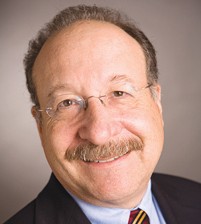Dubroff: End of merger proposal leaves health care future up in the air

Henry Dubroff
The debate over the future of health care — in the nation and in the region — comes down to a single question.
Is health care a competitive marketplace where price guides choices, or is it a regulated marketplace much like a public utility?
That question remains unanswered nationally as Congress grapples with how to reform or replace the Affordable Care Act. And in the region, the decision by Cottage Health and Sansum Clinic to drop their proposed merger preserves the status quo in Santa Barbara County but leaves longer-term questions unanswered.
The Federal Trade Commission and California Attorney General spent four years reviewing the Cottage Health-Sansum combination proposal, which would have put three hospitals, including the Santa Barbara Cottage flagship, and 23 Sansum outpatient clinics, under the control of a single entity.
The combined nonprofit organization would have had more than 4,000 employees and roughly $1 billion in annual revenue.
Some experts viewed the merger as a way for the combined organization to reduce overhead costs and achieve benefits of scale in negotiating for products and services. And under the Obama administration, it looked initially like large, vertically integrated organizations were being encouraged as a way to use data to drive better outcomes — perhaps with the utility model in mind.
But skeptics said there weren’t a lot of models to demonstrate whether a vertical integration could achieve lower costs. And in recent years, the FTC has been imposing conditions on health care mergers involving large hospitals, among them, the sale of surgery centers.
The election of President Donald Trump certainly changed the trajectory for Obamacare and while neither Cottage nor Sansum said politics was part of their decision to withdraw the application, the rhetoric coming out of Washington is much more about competition than consolidation.
And the joint decision to withdraw came just weeks after the House of Representatives passed its long-debated repeal and replacement for Obamacare, a piece of legislation that will likely be substantially rewritten in the Senate.
What does it all mean? Going forward, Sansum and Cottage still have a lot of interconnection. Sansum doctors will continue to rely on Cottage facilities for in-patient care and Cottage will be depending on Sansum doctors for admissions; electronic records will make it much easier to pass patients back and forth between the two systems.
But the business of health care across the Tri-Counties is changing and whatever happens to the Affordable Care Act, more complexity is likely to be in the cards. Some thoughts:
• Health care is a growth industry that’s attracting new entrants. The prospect of treating the Central Coast’s relatively wealthy population of aging baby boomers has brought UCLA Health into Ventura County. It spurred the construction of Kaiser Permanente’s new Ventura medical center, a new hospital for Community Memorial and Dignity Health’s new St. John’s Pleasant Valley facility.
• More strategic partnerships are in the cards. Dignity Health’s Marian Regional Medical Center in Santa Maria has developed a train and retain program for family practice residents with the USC Keck School of Medicine. A successful family practice partnership exists between UCLA and Ventura County Medical Center.
• Philanthropic efforts will remain important — particularly for large hospital projects. Cottage raised more than $100 million for its Santa Barbara capital campaign. In March, French Health Medical Center, a Dignity hospital in San Luis Obispo, received a $5.5 million gift from retired Apple Chief Financial Officer Peter Oppenheimer and his wife Beth.
• The model of employer-based care is breaking down. Obamacare imposed rules on employer-based insurance plans that dramatically raised costs; it provided incentives for individuals to join health care exchanges like Covered California. The Trump Administration wants to do away with employer and individual mandates but so far there is no clear signal what will replace them. Given the option, many companies, particularly small businesses, would opt out of the system.
The bottom line is that health care is a lot like a utility where scale matters; more than half the population gets its health care via Medicare, MediCal or via military or veterans programs. But it still has elements of competition in pharma pricing and in big cities where consumers can shop for the best place to have gall-bladder surgery.
Regulatory dithering over the Cottage Health-Sansum merger cost a lot of money and time and didn’t provide a clear path forward. That sounds a lot like the state of health care all across America today.
• Reach Editor Henry Dubroff at [email protected].











